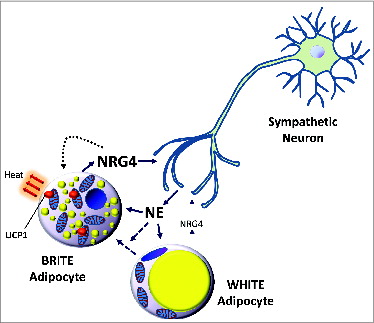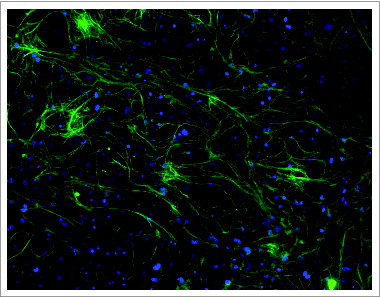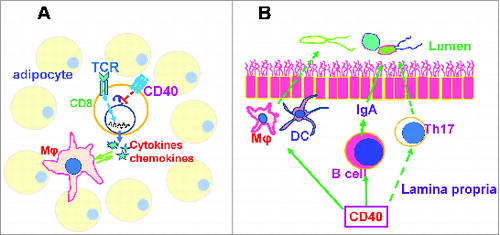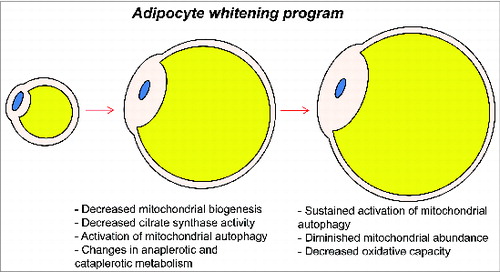Imaging Insights
pp 1-12
With the ability to observe and study brown adipose tissue (BAT) non-invasively, imaging studies have been a key source of knowledge when it comes to BAT function and activity in humans. The heat generated by thermogenically active BAT is a form of energy expenditure, and may provide insights into the treatment of obesity. In this review, authors Izzi-Engbeaya, Salem, Atkar, and Dhillo provide an overview of the current imaging processes, how they are used to study BAT and what each process can bring to the table. Imaging technology such as positron emission tomography-computed tomography (CT), single photon emission CT, magnetic resonance imaging;, Infrared thermography, and ultrasound are covered here.
Facial Fat Loss during Aging
pp 13-21
As we age, many of us have noticed an increase in abdominal subcutaneous fat as well as a loss of facial subcutaneous fat. In the first report of its kind, this research paper by Chon and Pappas looks at human facial preadipocytes and the ways that they have distinct different metabolic properties when compared to abdominal preadipocytes. Through studying the isolation, characterization, and culture of human facial preadipocytes the authors noted a few important differences between the differentiation of cultured facial preadipocytes and abdominal preadipocytes. They observed a higher proportion of differentiation with regards to facial cells, as well as the ability to differentiate through more passages and reduced lipolysis when compared to abdominally derived cells. Additionally, it was observed that when compared to abdominal adipose tissue, there was a reduction in several HOX genes in facial adipocytes.
Adipocytes of the Rat Race
pp 22-31
White adipose tissue (WAT) helps to regulate whole-body energy homeostasis through the adjustment of metabolism with regards to the conditions at hand. This can be affected through exercise, and human studies have shown a reduction of non-esterified fatty acids (NEFAs) after endurance training. Further analysis shows support of a reduction in WAT lipolysis through endurance training. This study by authors Pistor, Sepa-Kishi, Hung, and Ceddia looks at how chronic endurance training can change triglyceride metabolism in subcutaneous inguinal and epididymal fat pads in rats. Through the comparing of blood work of sedentary rats and rats subjected to endurance training, the authors noted reductions in bodyweight, fat pad mass, and insulin. In addition, there was a drop in non-esterified fatty acids in circulation as well as insulin stimulated glucose incorporation into lipids in the adipocytes of the fat depots in endurance trained rats.
The Metabolic Sink
pp 32-42
Despite a high body mass index being a risk factor for numerous diseases such as diabetes, there are instances where obese individuals have a reduced risk for type-2 diabetes while non-obese individuals actually develop it. Known as the “metabolic sink”, lower body subcutaneous adipose tissue (LBSAT) has been thought to have protective effects through an ability to isolate surplus lipids. This protection is investigated here by Cox-York, Wei, Wang, Pagliassotti and Foster through the study of mice undergoing LBSAT removal or a fake Sham surgery. After surgery, the mice were fed either chow or a high fat diet for 5 weeks. It was found that after 5 weeks, post LBSAT removal surgery mice fed the high fat diet had reduced glucose tolerance, muscle insulin sensitivity, and increased circulating insulin. At the 13 week mark, circulating insulin levels continued to be higher in the mice who underwent LBSAT removal. The data presented further supports the idea of the “metabolic sink” function of subcutaneous adipose tissue.
Adipokines and Pregnant Body Composition
pp 43-48
The signaling and regulating roles that adipokines play during low-grade inflammation in obesity can also contribute to medical pregnancy risks through the regulation of appetite, glucose homeostasis and immune function. However, the actual relation between abdominal fat mass in pregnancy and circulating adipokines is not completely known. This brief report by Ozias, Li, Hull, Brooks, and Carlson examines the relationship between numerous adipokines (leptin, resistin, vistfatin and adiponectin) and different body fat compartments in pregnant women. Their studies show that only leptin was associated with whole body fat mass. While there was no significant correlation of adiponectin and visfatin with regards to body composition, resistin showed the ability to be a circulating biomarker for abdominal visceral fat. These findings shed insights on the relationship between abdominal obesity and adipokines in pregnant women.
Brown Fingerprints
pp 49-53
Brown adipocytes have the ability to affect and trigger cellular metabolic events in order to maintain body temperature. This allows brown adipose tissue (BAT) to actually expend and dissipate energy, the opposite of white adipose tissue (WAT) which serves primarily as energy storage. Interestingly, as Christian discusses in this commentary, the dynamic nature of adipose tissue is shown when WAT is exposed to cold, resulting in what is known as brown-in-white (BRITE) adipocytes. Using transcription profiling in order to identify gene expressions involved in this browning process, the cold-induced neuregulin 4 was shown to be a BAT gene responsible for encoding an adipokine serving as a signaling bridge between adipocytes and the nerve cells which may relay the cold.
HIV-1 and Adipose Dysfunction
pp 54-58
The adverse effects of antiretroviral drugs on adipose tissue are documented; however there is clinical evidence that the actual HIV-1 virus itself may also play a role in HIV-associated lipodystrophy. Authors Agarwal and Balasubramanyam have previously focused on viral protein R (Vpr) and the possibility that it may dysregulate certain critical transcription factors that lead to adipose dysfunction. The commentary presented here serves as a summary of the results of their previous investigations, and shows how the results may suggest a causative correlation between chronic viral infections and forms of lipid metabolic disease, insulin resistance, and diabetes.
Enter the Extracellular Matrix
pp 59-63
While once thought to be passive, recent studies have shown that both adipose tissue and the extracellular matrix play a part in maintaining normal tissue homeostasis as well as engaging signal transduction pathways. In this commentary, Craft refers to the recently published studies which identify mechanisms through which the molecule microfibrial associated glycoprotein 1 (MAGP1) found in the extracellular matrix is able to regulate the energy metabolism in adipose tissue. By indirectly regulating the expression of thermogenic uncoupling proteins, MAGP1 plays a supportive roll in the maintenance of thermoregulation, and understanding more about this matrix could open the door to new ways of combatting metabolic diseases.
Anti-Inflammatory Effect of CD40
pp 64-68
The accumulation of immune cells in adipose tissue such as visceral adipose tissue (VAT) can be brought about through an excess of nutrient intake, and can lead to chronic inflammation and ultimately insulin resistance through the disruption of insulin effects on adipocytes and muscle cells. The receptor CD40 is known to play an important role in the body's adaptive immune response. But as authors Yi and Bishop discuss in this commentary, CD40 also relieves a degree of inflammation in VAT, thus reducing obesity-induced insulin resistance. The authors point to different potential therapeutic approaches to manipulate CD40's signaling pathways in VAT to help in the prevention of type 2 diabetes and the treatment of obesity-induced insulin resistance.
A Balancing Act through PI3K
pp 69-73
The association between insulin sensitivity and the progression of obesity is well known, with an increase in insulin resistance leading to disease. Nelson, Ballou, and Lin, the authors of this commentary, recently generated an adipose-specific p110α phosphoinositide 3-kinase (PI3K) signaling null mouse and provided novel insights of this signaling pathway in the regulation of glucose and lipid homeostasis as well as body weight. A loss of p110α in brown adipose tissue of the mice generated led to a reduction in mitochondrial-associated gene expression as well as decreases in brown adipocyte respiration. Additionally, the reduction of brown adipose activity led to a lowering of energy expenditure, thus promoting metabolic dysfunction and obesity, as well as lipid deposits in the liver. This commentary discusses the clear link between P13K and its possible role between insulin resistance and the onset of obesity.
Adipocyte Whitening during Nutrient Excess
pp 74-79
Although white adipose tissue (WAT) is known to have a critical part in the regulation of systemic metabolism through its response to changes in nutrition, not much is known about the actual metabolic changes which occur in WAT during obesity. This commentary by Hill discusses recent studies which found metabolic changes in adipocytes prior to macrophage infiltration in adipose tissue which was expanding. Further analysis showed the dysregulation of multiple metabolic pathways, activation of mitochondrial autophagy and the loss of mitochondrial biogenetic capacity as well as a down regulation of several mitochondrial proteins some time afterwards. This supports the idea of a whitening of adipocytes that could play a vital role in how adipose tissue is remodeled during periods of nutrient excess.





